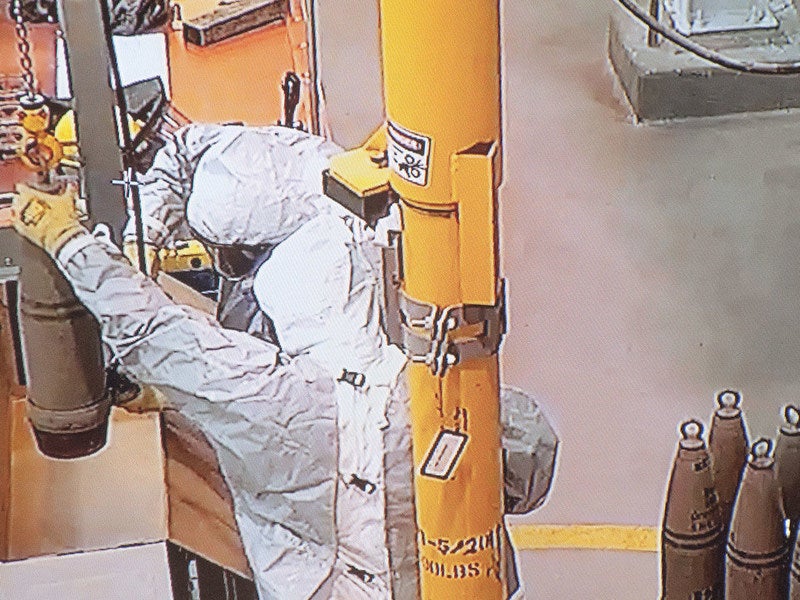
On 7 July the US Department of Defence (DoD) destroyed the last item in its inventory of chemical weapons.
The destruction of a sarin nerve agent-filled M55 rocket, at the Blue Grass Army Depot in Kentucky, marked the completion a 26 year long international commitment ratified in the Chemical Weapons Convention of 1997. The accomplishment meets the United States’ commitment to complete its destruction operations by September 30, 2023.
In addition, on June 22, a team of Colorado companies led by Bechtel National, Inc. completed the destruction of more than 780,000 mustard agent-filled projectiles at the US Army Pueblo Chemical Depot. In March 2015, more than 2,613 tonnes of chemical agents were destroyed in Pueblo using a neutralisation method followed by biotreatment and explosive destruction technologies.
“This is the first time an international body has verified destruction of an entire category of declared weapons of mass destruction — reinforcing the United States’ commitment to creating a world free of chemical weapons,” said Under Secretary of Defense for Acquisition and Sustainment Dr. William A. LaPlante.
A 33-year long process
The destruction of the United States’ chemical weapons stockpile, which once contained more than 30,000 tonnes of chemical warfare agents in explosively configured weapons and bulk containers, began in 1990 on Johnston Atoll in the Pacific, as mandated by Congress in 1986. By 2012, the United States Army had successfully completed the destruction of weapons at six additional sites across the continental United States, including installations in Alabama, Arkansas, Indiana, Maryland, Oregon, and Utah.
According to Michael S. Abaie, Executive Officer of the DoD’s Assembled Chemical Weapons Alternatives Programme, the facilities will be closed for the next three to four years.
“This includes disposal of secondary wastes, decontamination and decommissioning of facilities and equipment, disposition of property, demolition of some facilities, and close-out of contracts and environmental permits. During closure, the safety of the workforce, the public and the environment will remain the program’s top priority,” said Abaie.
In a media roundtable of senior officials on 10 July, Douglas Bush,
Assistant Secretary to the Army, told journalists that by January of 2012, nearly 90 percent of these weapons were eliminated, but that destroying the remainder posed a greater challenge because a new understanding had developed about safety requirements that complicated further operations.
UK statement on chemical weapon threat to Ukraine from Russia
The news was followed on 11 July by a statement from Joanna Roper, the UK Permanent Representative to the Organisation for the Prohibition of Chemical Weapons (OPCW) , at the OPCW’s 103rd Executive Council.
She welcomed the news from the US DoD of the striation of its chemical weapons arsenal, but went on to deliver a cautionary note about the threat chemical weapons still pose around the world.
“Meticulous investigations have documented repeated uses of chemical weapons by the Assad regime, years after Syria claimed to have destroyed all its stockpiles. Denials and disinformation from the Assad regime and its Russian backers cannot disguise Syria’s failure to cooperate with the Technical Secretariat or to fulfil its wider commitments under the Convention.”
“We cannot exclude the threat of chemical weapons attacks by Russia in Ukraine.”
Roper went on to state that any use of chemical weapons by Russia in Ukraine would have ‘severe consequences’, and that the United Kingdom supports Ukraine’s efforts to to protect itself agains the threat of chemical weapon use and to investigate possible cases of their use.








